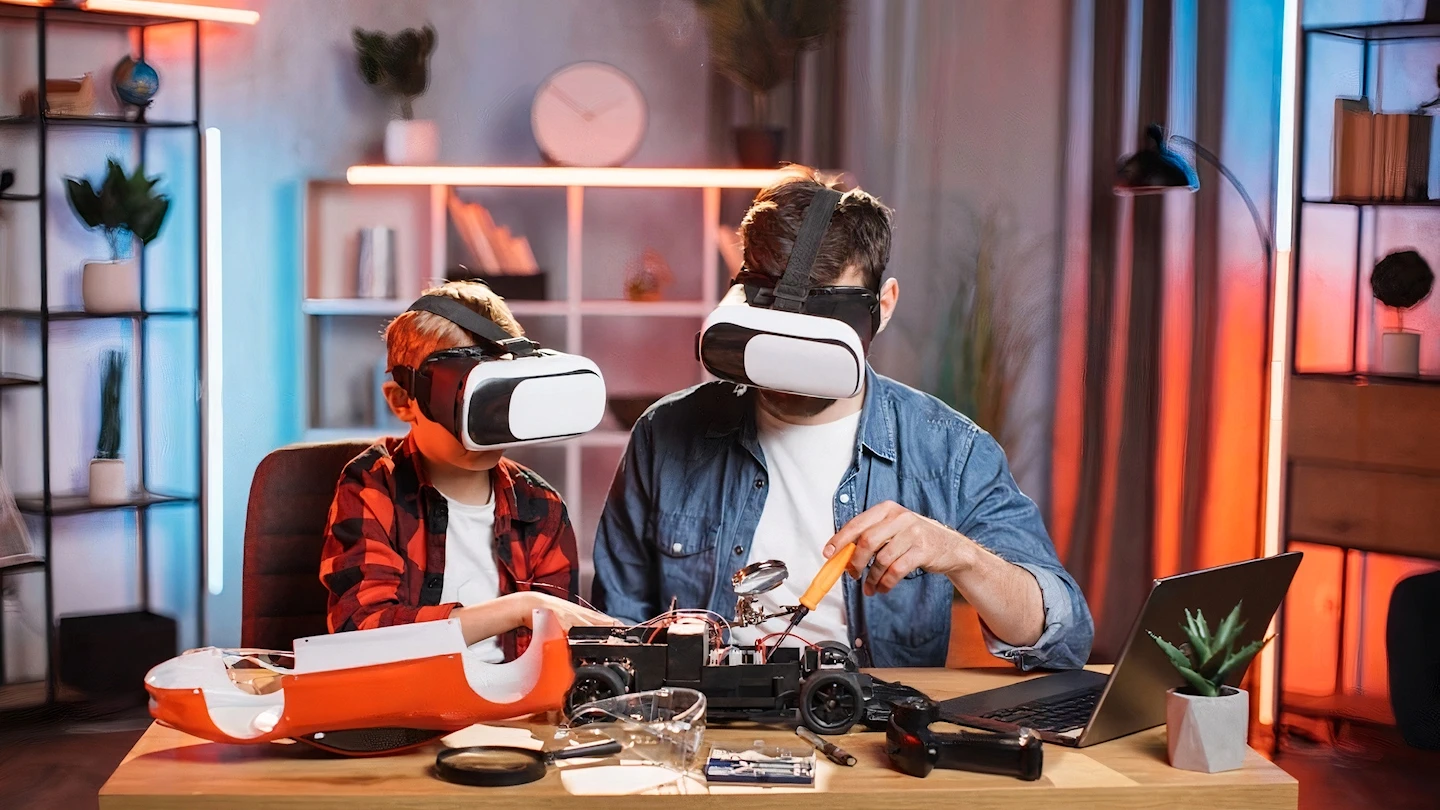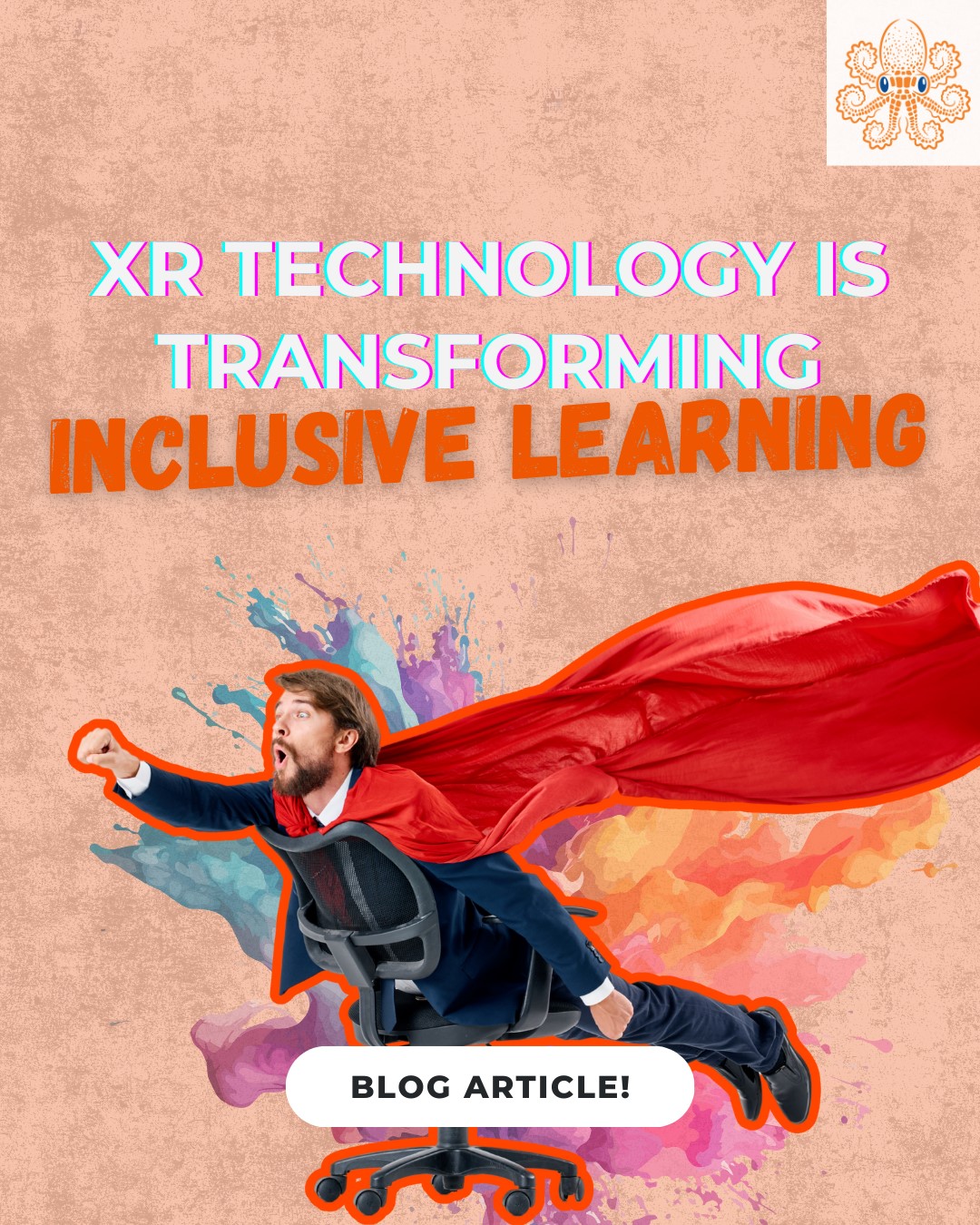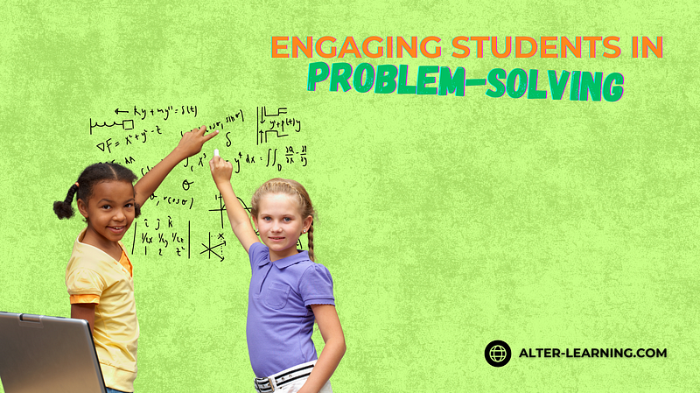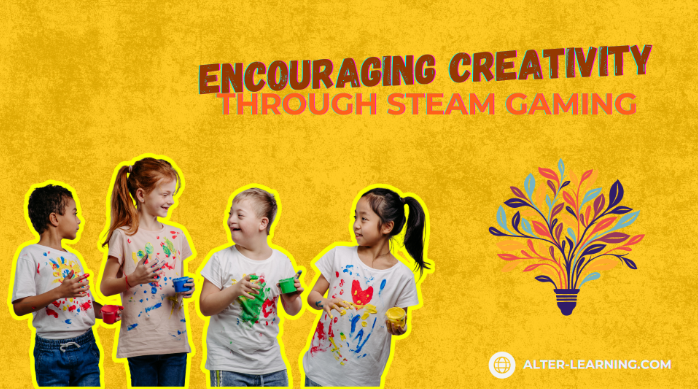Virtual reality (VR) and Augmented reality (AR) are two emerging technologies that significantly impact education. AR overlays digital information in the real world, while VR creates a completely immersive virtual environment. These technologies can be used to enhance STEAM education and career exploration in various ways.
What is VR and AR?
Extended Reality (XR) encompasses any technology that alters reality by adding digital elements to the real world. Its level of immersion is determined by the equipment you use.
Augmented reality (AR), Mixed Reality (MR), and Virtual reality (VR) are three emerging technologies that are significantly impacting education and career exploration for older students.
- VR creates an entirely immersive virtual environment.
- AR overlays digital information in the real world.
- MR blends the natural world with digital or virtual elements, where physical and digital elements can interact.
What Can I Do with XR?
While XR can be used to create engaging and interactive learning experiences, it is also being used in a variety of careers that students may be interested in. The following are the top 14 industries that have already implemented XR in the last decade.
- Architecture
- Education
- Military
- Mental Health
- Medical Training
- Retail
- Learning & Development
- Tourism
- Professional Learning
- Automotive
- Design
- Marketing
- Events and Conferencing
- Gaming
How Can XR Enhance STEAM Education?
XR can enhance STEAM education in a wide variety of ways.
- AR can be used to create interactive simulations of scientific phenomena, such as the solar system or the human body.
- MR can be used to allow an anatomy class to access a lab in a Hybrid Classroom they may not otherwise have.
- VR can be used to take students on virtual field trips to places like the International Space Station or an archeological dig site.
How Can XR be Used for Career Exploration?
As mentioned earlier, XR is already being used in a wide variety of industries and can also help students explore different career options. So, how does this help a young adult choose a career path?
- VR can be used to take students on virtual job shadows, where they can experience what it is like to work in the virtual shoes of a specific role for a day.
- AR can be used to create interactive simulations of different jobs, such as being a doctor or a pilot.
- MR can be used for virtual career fairs where students can meet with representatives from different companies.
Benefits of XR for STEAM education
There are many benefits of using AR and VR in STEAM education. These technologies can:
- There are many benefits of using XR in STEAM education. These technologies can:
- Increase engagement and motivation: XR can make learning more engaging and motivating for students because it allows students to interact with the content in a more immersive and interactive way.
- Improve understanding of complex concepts: XR can help students better understand complex concepts by providing them with a visual representation.
- Enhance problem-solving skills: XR can help students enhance their problem-solving skills by providing realistic simulations of real-world problems.
- Increase collaboration and teamwork: XR can help increase student collaboration and teamwork by allowing students to work together on projects in a shared digital environment.
Benefits of XR for Career Exploration
There are also many benefits of using XR for career exploration. These technologies can:
- Real-world application of skills: XR can help college-level students develop the skills they need to be successful in the workforce. Many colleges use these technologies to allow students to practice their skills in realistic, simulated environments.
- Provide hands-on experience with a variety of careers: XR can allow students to experience different careers firsthand and help them make more informed decisions about their future careers.
- You may want to experience a day in the life of a doctor and discover that you faint at the sight of blood before making a time and financial commitment to that career path.
- Experiencing a day in the life of a carpenter and discovering that math is a huge part of what you do every day can provide you with the course focus you need during high school.
- Exposure to new and exciting career options: XR can expose students to options they may not have known about otherwise, helping them explore their options and find a career they are passionate about.
- Increased confidence in making career choices: XR can help students feel more confident in making career choices and identifying any education required for those choices. These technologies allow students to explore different careers and better understand what they seek in a career.
Summary
The transformative role of Extended Reality (XR) technologies—augmented reality (AR), mixed reality (MR), and virtual reality (VR)—in STEAM education and career exploration for older students is immense. XR enhances learning by providing immersive and interactive experiences, such as simulating scientific phenomena, enabling virtual field trips, and facilitating virtual career fairs.
Key benefits of using XR in education include increased engagement, improved understanding of complex concepts, enhanced problem-solving skills, and greater collaboration among students.
For career exploration, XR offers real-world skills applications, hands-on experiences across various professions, and exposure to new career options, ultimately boosting students’ confidence in making informed career choices.
FAQs about VR and AR in STEAM education and career exploration:
What are some examples of VR/AR applications in STEAM education?
* It can create interactive anatomical models that allow students to explore the human body in detail.
* It can be used to simulate chemical reactions, allowing students to see how molecules interact with each other.
* It can be used to create realistic simulations of engineering projects, allowing students to test and improve their designs.
* It can be used to take students on virtual field trips to space, allowing them to explore planets and stars.
* It can be used to simulate natural disasters, allowing students to learn about the causes and effects of these events.
What are some examples of VR and AR applications in career exploration?
* Virtual job shadows: Shadow a professional in a particular field in a virtual environment.
* Virtual career fairs: Meet with representatives from different companies and learn about different career options in a virtual space.
* Interactive career quizzes: Take quizzes that help you identify careers that are a good fit for you based on your interests and abilities.
* Simulations of real-world skills: Practice real-world skills that are required for different careers in a safe and controlled environment.
What are the limitations of VR/AR in STEAM education and career exploration?
* AR and VR headsets can be expensive, making it difficult for schools to afford them.
* AR and VR can be technically challenging to implement, requiring specialized training for teachers and students.
* A limited amount of AR and VR content is still available, making it difficult to find content relevant to the curriculum.
* Some people may experience motion sickness when using AR and VR.
* There are concerns about students’ privacy using AR and VR, as the technology can collect data about their movements and interactions.
How can the limitations of VR and AR be overcome?
* The cost of AR and VR headsets is decreasing, making them more affordable for schools.
* Many resources are available to help teachers and students learn how to use AR and VR.
* Some companies are developing AR and VR content for education.
* Some techniques can be used to reduce motion sickness, such as taking breaks and using ginger.
* Schools can implement policies to protect the privacy of students who use AR and VR.
Where can I learn more about AR and VR in education?
* Many websites and blogs provide information about AR/VR in education.
* Several conferences and workshops focus on AR/VR in education.
* Several universities offer courses on AR/VR in education.




